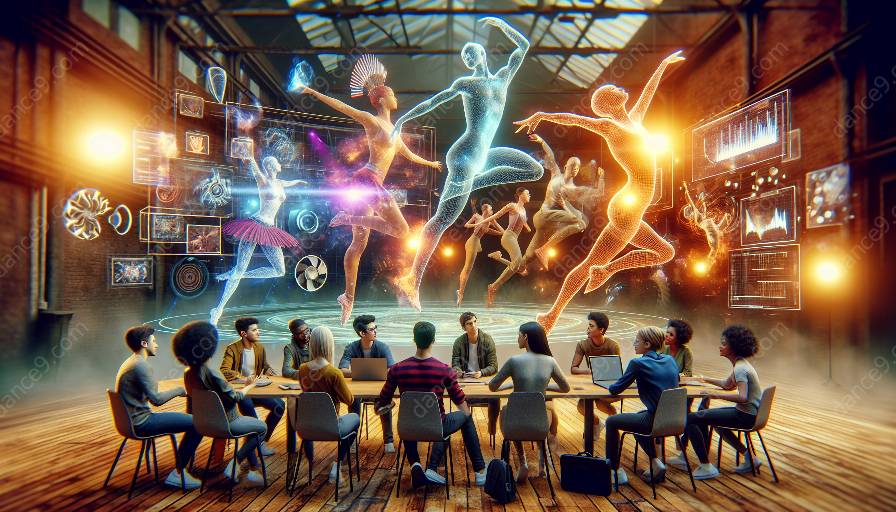Dance is a powerful form of self-expression and artistic communication that has been enriched and transformed through technological advances in recent years. Augmented reality (AR) is one such technology that has shown great potential in revolutionizing the educational experience in the dance world. By integrating AR into dance education, students and performers can explore new dimensions of movement, creativity, and learning.
Enhanced Learning Experience
One of the primary educational benefits of using AR in dance is the enhanced learning experience it offers. Through AR, dancers can visualize and interact with virtual elements, such as 3D models of the human body, to better understand anatomy, kinetics, and the mechanics of movement. This visual aid provides a unique perspective that complements traditional teaching methods, making complex concepts more accessible and engaging for students.
Immersive Practice Environments
Another compelling aspect of AR in dance is the creation of immersive practice environments. With AR technology, students can rehearse choreography in a virtual space, experiment with different stage designs, and receive real-time feedback on their performance. This not only enhances the learning process but also fosters creativity and adaptability, as dancers can explore a wide range of scenarios and settings that would be impractical or impossible in traditional rehearsal spaces.
Collaboration and Community Building
AR in dance also facilitates collaboration and community building among students and performers. By employing AR tools, dancers can co-create virtual performances, share choreography ideas, and provide feedback to one another regardless of geographical location. This interconnectedness enriches the dance education experience by fostering a global community of artists who can learn, collaborate, and inspire each other through the shared platform of augmented reality.
Interactive Learning Modules
AR technology enables the development of interactive learning modules that cater to diverse learning styles and abilities. These modules can incorporate multimedia components, such as audio guides, visual overlays, and interactive quizzes, to engage students and enhance their understanding of dance theory, history, and cultural context. By providing a dynamic and customizable educational experience, AR empowers students to take ownership of their learning journey and explore the art of dance through a multidimensional lens.
Integration of Technology and Artistry
As technology continues to play an integral role in modern society, the integration of AR in dance underscores the harmonious relationship between technology and artistic expression. By embracing AR as a tool for education and creative exploration, dancers can expand their technical skills while nurturing their artistic sensibilities. This convergence of technology and artistry not only prepares dancers for the evolving landscape of performance and production but also encourages them to approach their craft with innovation and adaptability.
The Future of Dance Education
Looking ahead, the integration of AR in dance education holds immense potential for shaping the future of the art form. As AR technologies continue to advance, the possibilities for educational applications in dance are limitless. From interactive virtual performances to personalized learning experiences, AR opens doors to a new era of creative expression, connectivity, and immersive learning in the world of dance.
As the boundaries between technology and artistic disciplines blur, the educational benefits of AR in dance stand out as a testament to the transformative power of innovation and collaboration. By harnessing the capabilities of augmented reality, dance education can evolve, adapt, and inspire the next generation of dancers and choreographers, paving the way for a more dynamic and inclusive dance ecosystem.

































